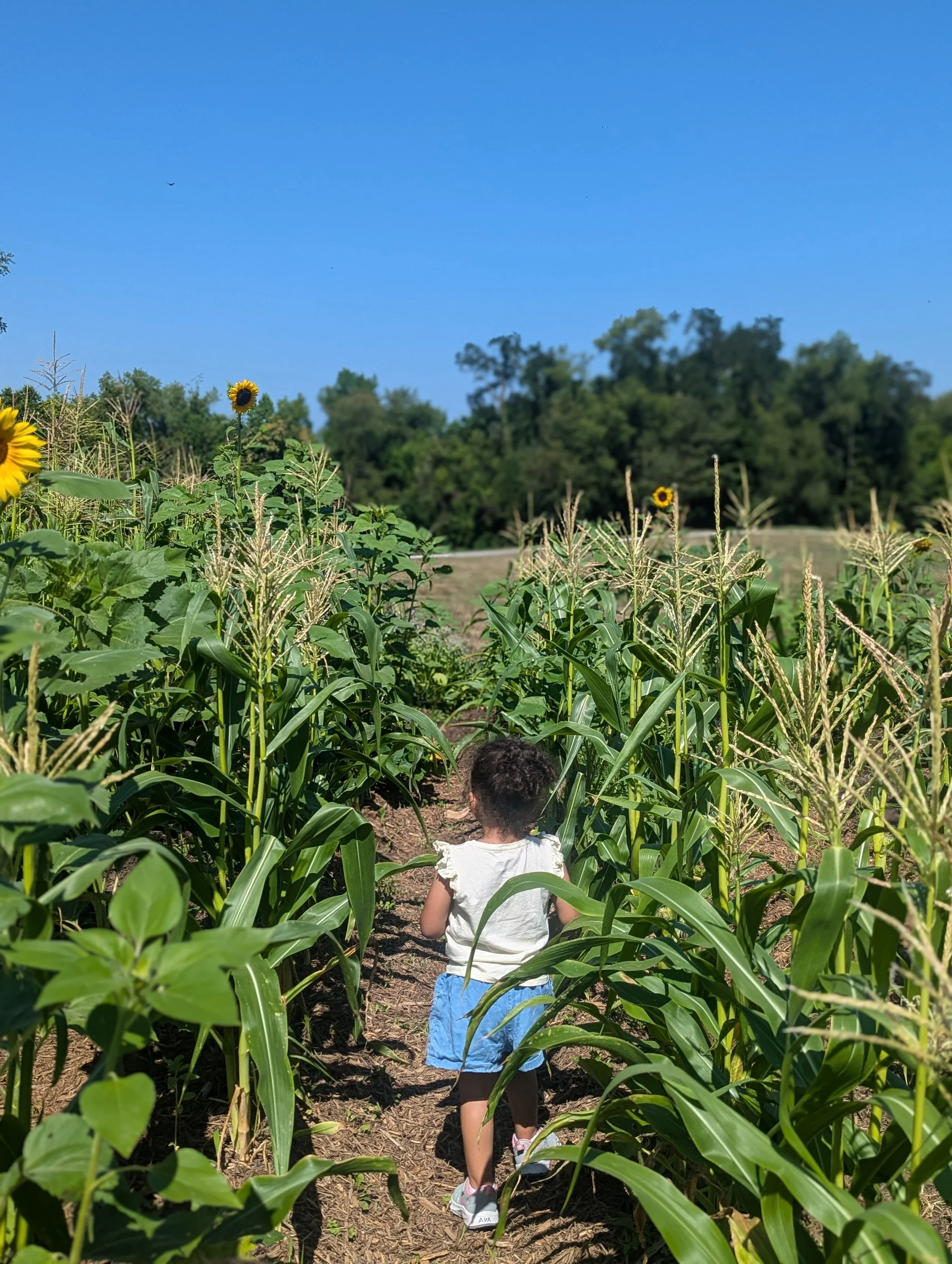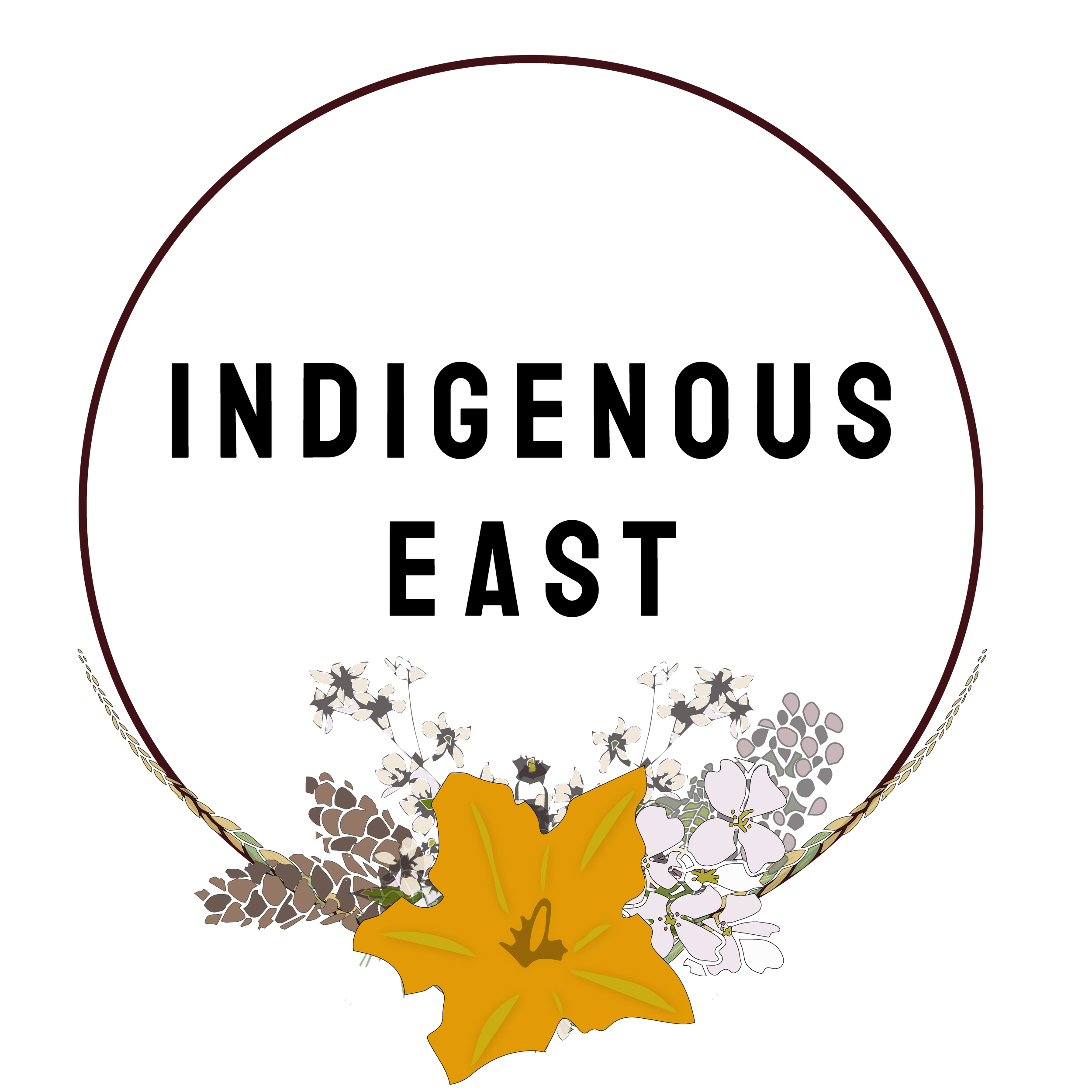Establishing an Indigenized future for the East…
Our story
Indigenous East was founded by Alexa Sutton (African American/Yesàh – Ohio Saponi) in 2020, originally under the name East Coast Indigenous Landscapes Partnership (ECLIP). The vision emerged from a deep desire to accelerate land and water rematriation in the Southeast and Mid-Atlantic, while creating space for Indigenous communities (those federally recognized, state recognized, and relationally-recognized) to create and implement adaptable, effective approaches to conservation & sovereignty.
At the time, Alexandra was serving as the Southeast Regional Program Director at The Wilderness Society, where she had supported a number of Indigenous and Afro-Indigenous-led conservation efforts. Inspired by these relationships and the urgent need for Indigenous-centered conservation spaces, she began to imagine a broad, intertribal network rooted in cultural responsibility, ecological repair, and community self-determination.
With seed funding from The Wilderness Society and early support from aligned donors, ECLIP formally launched in 2021. Its first collaborations included a 41-acre land and water rematriation project led by Chief Frank Adams of the Upper Mattaponi Indian Tribe, and a 141-acre citizen conservation effort stewarded by Luke Tyree of the Monacan Indian Nation.
Since then, the network has continued to grow—connecting land stewards, culture-bearers, and knowledge holders across tribal nations and Afro-Indigenous communities. Now known as Indigenous East, the initiative supports a living web of rematriation projects, land return campaigns, language revitalization efforts, and intergenerational organizing throughout the Eastern Woodlands. Indigenous East is stewarded by the Landberry Foundation, its non-profit home, and guided by an advisory board of Indigenous and Afro-Indigenous women from across southeastern tribes.
Our Model
Indigenous East isn’t built like a traditional nonprofit—it grows like a forest: through relationships, rooted systems, and shared responsibilities.
We partner with Indigenous nations and communities that are federally recognized, state recognized, or relationally-recognized — those who are recognized as kin by other Indigenous peoples or communities. This includes Afro-Indigenous and diasporic communities whose ties to land and ceremony remain strong, even in the face of displacement and erasure.
We grow by listening first.
Many new relationships begin through referrals, ceremonies, or invitations from within the network. From there, we offer support in ways that respond to each community’s goals—whether that means providing fiscal sponsorship, mentoring emerging land stewards, helping navigate conservation law and funding systems, or simply being a witness and amplifier for existing work.
We avoid one-size-fits-all approaches. Instead, we:
Build reciprocal relationships grounded in trust and accountability
Support culturally-rooted land and water rematriation efforts
Match communities with donors, resources, and allies on their terms
Convene spaces for shared learning, mentorship, and mutual aid
Make space for ceremony, joy, grief, and intergenerational healing
Every partner shapes the network. Every project teaches us something new. In this way, Indigenous East remains a living, evolving movement—led by the people and places we serve.
Our Future
As we look toward 2030, the future of Indigenous East is shaped by a clear and living vision: land returned, culture revitalized, waters and wildlife protected, and communities resourced for generations to come, in ways that reflect ancestral knowledges and intertribal kinship.
Our Goals for the East
Support at least 30 rematriation projects
We will continue to provide fiscal sponsorship, project incubation, and mentoring to land and water rematriation efforts. By 2030, we aim to support and connect 30 or more Indigenous-led rematriation projects, ranging from family land recoveries to full-scale conservation partnerships — our own 30x30 commitment.
Protect at least 10,000 acres of watersheds, migration corridors, and sacred sites
Through our network as well as direct partnerships with groups like Honor Water, 7 Directions of Service, and NDPonics, we will work to protect rivers, springs, wetlands, and mountain passes that form key parts of Indigenous cultural landscapes and ecological corridors. By 2030, we aim to support at least five ecological protection and species recovery efforts and impact 10,000 acres through applied conservation science and Indigenous knowledge.
Kì:li — Counter-map Indigenous land relationships across the region
Through a multi-year collaboration with the Open Space Institute (OSI), the National Wildlife Federation (NWF), Just Collective, and 7 Directions of Service, Indigenous East is leading a culturally-responsive mapping initiative that documents Indigenous land relationships—past, present, and future—across the Eastern Seaboard. The map will:
Identify sites of active rematriation, cultural importance, and ecological stewardship
Elevate the leadership of both recognized and relationally-recognized communities
Inform funding strategies for Indigenous conservation
Serve as a living, tribally-guided visioning tool for organized land return
Oto:hiyé – Launching a cultural infrastructure fund
We are developing Oto:hiyé, a regionwide cultural infrastructure fund that supports Indigenous-led land return, ceremonial restoration, and community-based governance. By 2030, our goal is to establish Oto:hiyé as a $5–10 million fund, seeded through public, private, and philanthropic investment, and managed in alignment with Indigenous values of reciprocity, kinship, and collective care. This will allow Indigenous East to serve as a fully-resourced platform that offers fiscal sponsorship, shared learning, technical assistance, and capital access for Indigenous communities across the East.
Kihkǫspé:hla – Building a regional site for culture, learning, and ceremony
We are partnered with NDPonics and Washington & Lee University to grow the impact of Kihkǫspé:hla, a central cultural campus in ancestral Yesàh homelands that will serve as a space for language immersion, youth gatherings, regional convenings, and ceremony. By 2030, we aim to have expanded our infrastructure to support at least 100 students and 10 - 20 scholars per year, co-creating its design with tribal leaders, artists, educators, and community members from across the Yesàh communities.
Strengthen intertribal governance and relational recognition pathways
We will continue building governance models that support relational recognition as a pathway to land, ceremony, and rights in a way that strengthens, rather than threatens Native sovereignty — and that is also not limited by colonial systems of recognition. This includes building community-to-community recognition frameworks, landholding models, and trust structures that center Indigenous law and kinship.
Our Goals for Our Yesàh Communities
Our founder belongs to the Yesàh (Eastern Siouan) peoples—including the Saponi, Tutelo, Monacan, and Occaneechi—and so Indigenous East holds a special obligation to support cultural revitalization, land return, and language resurgence for these communities.
Our goals through 2030 include:
Training at least 8 new Yesa:sahį language teachers, grounded in land-based languaage curricula
Expanding youth and elder immersion programs, supported by the proposed Shauhuntacot:su: and Ati: Wa:oki initiatives
Restoring ceremonial and learning spaces on historically significant Yesàh lands
Documenting and mapping Yesàh cultural landscapes, in connection with land return and public education efforts
Publishing intergenerational storytelling materials, led by tribal knowledge holders, to sustain oral history traditions





